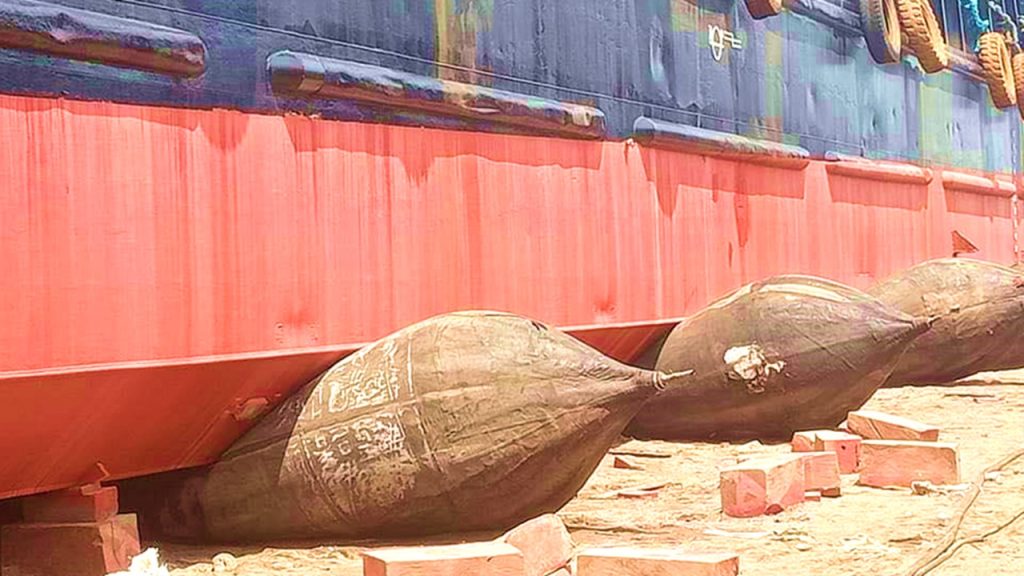Tugboats, the unsung heroes of the Philippine maritime industry, have long been known for their robust power and steadfast reliability. However, in recent years, a new trend has emerged: tugboat conversion. This intriguing process involves transforming these workhorses of the sea into versatile vessels that serve a multitude of purposes beyond towing and pushing. Behind the scenes of this captivating transformation lies a complex and meticulous endeavor that combines engineering prowess with innovative design. In this article, we will delve into the fascinating world of tugboat conversion in the Philippines, exploring the various stages involved and uncovering how these mighty vessels are reborn to tackle new challenges on the open water.
Click here to view our ship conversion and modification services in Tanza, Cavite, Philippines.
Overview of the Philippine Dockyard Industry
The Philippine dockyard industry has experienced significant growth in recent years, driven by the country’s strategic location and the increasing demand for maritime services. With nearly 7,000 islands, maritime transportation is crucial for connecting communities, transporting goods, and supporting tourism. The dockyard industry plays a vital role in enabling these activities by providing maintenance and repair services for vessels of all types and sizes.
One unique aspect of the Philippine dockyard industry is its ability to cater to different markets. While major players focus on large-scale shipbuilding projects, there are also smaller yards that specialize in tugboat conversion processes. These companies have developed expertise in transforming existing vessels into fully functional tugboats with customized features. This niche market has become increasingly popular due to its cost-effective approach and quick turnaround time compared to building new vessels from scratch.
Furthermore, the Philippines offers competitive labor costs without compromising on quality standards. Highly skilled workers who have gained experience through various international shipyards contribute to the industry’s success. The availability of advanced technologies and equipment further enhances efficiency throughout the conversion process.
The Philippine dockyard industry presents a dynamic landscape in which both large-scale shipbuilding projects and tugboat conversions thrive. The sector’s ability to cater to diverse markets contributes to its continued growth and global competitiveness. As maritime activities continue to play a vital role in the Philippines’ economy, it is crucial for the country’s dockyards to adapt quickly and embrace sustainable practices while meeting evolving demands from domestic and international clients alike.
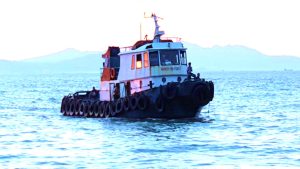
What are Tugboats?
Tugboats are small, agile vessels that play a crucial role in the maritime industry. With their powerful engines and sturdy construction, they are specifically designed to assist larger ships in maneuvering through tight spaces or challenging situations. While their size may deceive some, these little workhorses pack a punch when it comes to pulling heavy loads, thanks to their incredible towing capacity.
The driving force behind a tugboat’s impressive performance is its propulsion system. Equipped with multiple propellers and steering mechanisms located at both ends of the vessel, they can move in any direction with ease. Additionally, tugboats often have an escort mode capability that allows them to provide assistance during berthing or anchoring operations for bigger ships. These remarkable features not only enable them to control the movements of large vessels but also ensure the safety and efficiency of maritime traffic.
Moreover, tugboat operators possess the extensive knowledge and skills required for successful operations. They must analyze various factors such as wind speed, current direction, ship weight distribution, and water conditions before executing precise maneuvers. This highlights the importance of experienced crew members who bring years of expertise to handling different scenarios effectively. As such, tugboats continue to be indispensable assets in ensuring smooth sailing for ships across the globe while proving that size doesn’t always dictate strength on the open seas.
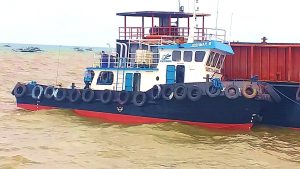
Understanding the Tugboat Conversion Process
When it comes to tugboat conversion, understanding the process is crucial for those looking to repurpose or upgrade their vessels. In the Philippines, dockyard and marine services play a pivotal role in providing expertise and support for these conversions. One of the key aspects of the tugboat conversion process involves evaluating the structural integrity of the vessel. This includes assessing its hull condition, examining any potential corrosion issues, and determining if any reinforcements are required.
Additionally, as part of the conversion process, propulsion systems such as engines and thrusters may need to be upgraded or replaced entirely. This not only improves performance but also enhances fuel efficiency and reduces emissions. Alongside this, electrical systems may also need to be revamped to accommodate any new equipment added during the conversion process.
Another critical factor in tugboat conversions is ensuring compliance with safety regulations and industry standards. The converted tugboat must meet all necessary requirements related to stability, fire safety measures, navigation equipment, communication systems, and crew accommodations. Additionally, it is imperative that all modifications made during the conversion adhere to classification society rules while considering weight distribution for optimized operational effectiveness.
By understanding these crucial aspects of the tugboat conversion process, owners can make informed decisions when undertaking such endeavors. With expert guidance from dockyard and marine service providers in the Philippines who possess robust knowledge of vessel engineering and design procedures, coupled with extensive experience, successful conversions can become a reality.
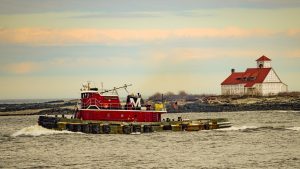
Here are 6 simple steps on how ship repair companies provide tugboat conversion:
Step 1: Assessment and Planning
Assessment and planning are crucial aspects of the tugboat conversion process. Before embarking on any project, Amaya Dockyard and Marine Services in the Philippines conduct a thorough assessment of the existing vessel to determine its current condition and identify any potential challenges or limitations that may arise during the conversion. This involves inspecting the hull, machinery, electrical systems, and other relevant components to ensure they meet safety standards and can withstand the proposed modifications.
Once a comprehensive assessment is complete, careful planning takes place to outline the specific goals and objectives of the conversion project. This includes identifying required modifications or upgrades, considering budgetary constraints, and establishing a timeline for completion. Moreover, an efficient plan also incorporates considerations regarding environmental regulations as well as ensuring compliance with international maritime standards.
By conducting an in-depth assessment and meticulous planning before commencing any tugboat conversion project, Amaya Dockyard and Marine Services Inc. in the Philippines ensure that all necessary precautions are taken into account from an early stage. This approach helps to mitigate risks associated with unexpected challenges during construction while enabling individuals involved in this process to make informed decisions based on accurate assessments of their vessel’s needs. Through careful assessment and strategic planning, dockyards can offer exceptional services by transforming ordinary tugboats into high-performing vessels equipped for various marine activities, such as salvage operations or offshore support functions, efficiently.

Step 2: Structural Modifications and Reinforcements
Once the initial planning and inspections are completed, the next crucial step in the tugboat conversion process is making structural modifications and reinforcements. This stage involves evaluating the existing structure of the vessel and determining if any changes need to be made to accommodate its new purpose.
Structural modifications can include cutting out sections of the hull, installing new equipment or machinery, reinforcing bulkheads or decks, or even adding new compartments. These modifications are necessary to ensure that the tugboat will meet safety standards while performing its intended tasks.
Additionally, strengthening the vessel’s structure is essential to account for increased loads that may be exerted during towing operations. This can involve adding additional steel plates, strengthening frames or supports, or even considering alternative materials such as composites.
This step requires a careful balance between maintaining structural integrity and incorporating necessary modifications. By ensuring that a tugboat is structurally sound and reinforced properly, it can handle its new responsibilities with ease and ensure a safe working environment for crew members.
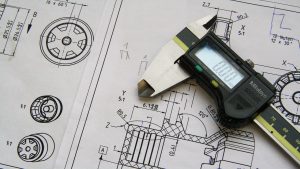
Step 3: Installation of Additional Equipment and Systems
Once the structural modifications to a tugboat are completed, the next crucial step in its conversion process is the installation of additional equipment and systems. This phase involves integrating various components that enhance the vessel’s functionality and operational capacities.
One key aspect of this installation process is upgrading or installing new propulsion systems. These systems are essential for powering the vessel, maneuvering it efficiently in different conditions, and achieving maximum performance. In addition to propulsion systems, other vital equipment such as navigation devices, communication systems, radar technology, and fire detection and suppression systems must also be carefully installed.
Integrating all these elements requires expertise from skilled technicians who can ensure seamless integration while adhering to strict safety standards. Attention to detail is paramount during this phase, as even minor errors in system installations can compromise the tugboat’s overall effectiveness and reliability. With their comprehensive knowledge of marine engineering principles and vast experience in shipbuilding projects, Amaya Dockyard’s team ensures that each installation is carried out with precision and meticulousness.

Step 4: Testing and Quality Assurance
Once the tugboat conversion process at Amaya Dockyard and Marine Services in the Philippines reaches Step 4, testing and quality assurance come into play. During this crucial phase, the converted tugboat undergoes a series of rigorous tests to ensure it meets industry standards and performs optimally. The project team carries out thorough inspections, checking for any structural weaknesses or system malfunctions that may have been overlooked during previous stages.
Testing encompasses not only physical aspects but also requires comprehensive verification of all electronic systems employed on board. This includes communication systems, navigation equipment, safety devices, and auxiliary machinery, among others. Through meticulous testing and quality assurance procedures, Amaya Dockyard and Marine Services ensure that every aspect of the converted tugboat is thoroughly inspected before being deemed seaworthy.
To guarantee a successful towing operation in various conditions, sea trials are conducted during this stage. These trials allow a real-world assessment of the tugboat’s maneuverability, stability, propulsion efficiency, and other performance parameters. A carefully planned test route provides an opportunity to evaluate whether modifications made during conversion have resulted in improvements as intended.
During this step of testing and quality assurance in the tugboat conversion process at Amaya Dockyard and Marine Services in the Philippines, attention to detail is paramount. By meticulously inspecting all components alongside comprehensive sea trials to assess performance capabilities under different circumstances, we effectively mitigate potential risks associated with future operational challenges onboard the converted vessel.

Step 5: Delivery and Commissioning
Once the tugboat conversion process at Amaya Dockyard and Marine Services Inc. in the Philippines is complete, it’s time for the exciting stage – delivery and commissioning. After months of hard work and meticulous planning, the converted tugboat is now ready to set sail. However, before it can be handed over to its new owners, there are crucial tasks that need to be carried out.
Firstly, rigorous sea trials are conducted to ensure that the converted tugboat meets all safety regulations and performs optimally in real-life conditions. This step allows for any necessary adjustments or fine-tuning before the official handover. In addition to testing its navigational capabilities, engineers thoroughly examine engine performance, stability, maneuverability, and communication systems.
After successfully passing sea trials, a formal commissioning ceremony takes place where the owners officially take possession of their newly converted tugboat. This event serves as a celebration of all the hard work put into transforming an existing vessel into something new and improved. It’s a time for both Amaya Dockyard and Marine Services, as well as our clients, to come together and acknowledge their shared accomplishments while also marking the beginning of a new chapter in maritime operations.
The delivery and commissioning stages are truly exciting moments in any tugboat conversion project. It signifies not only successful completion but also signifies that a vessel has been transformed into something more capable than ever before.
After the completion of structural modifications, the installation of additional equipment and systems, as well as thorough testing and quality assurance, the converted tugboat is ready for delivery. This step involves ensuring that all necessary paperwork, certifications, and licenses are obtained in accordance with local regulations. It is essential to comply with all legal requirements to ensure smooth sailing during operations.
Once all documentation is in order, the converted tugboat can be commissioned.
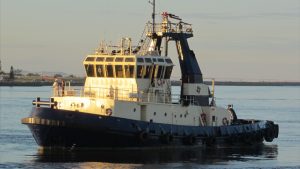
Step 6: Maintenance and ongoing support
Once the tugboat conversion is complete, the next step in the process is maintenance and ongoing support. This crucial phase ensures that the converted vessel remains in optimal condition and continues to perform at its best. Amaya Dockyard and Marine Services in the Philippines offers extensive maintenance and support services to ensure that every aspect of the converted tugboat is well-maintained.
Regular inspections are conducted to identify any issues or potential problems before they become major concerns. This proactive approach allows for timely repairs and adjustments, preventing costly breakdowns or downtime. In addition, Amaya Dockyard provides on-call assistance for any emergencies or unexpected events that may arise during the operation of the converted tugboat.
Moreover, ongoing support includes training programs for crew members to familiarize themselves with operating and maintaining the newly converted vessel. This ensures that they have the necessary knowledge and skills to handle any situation effectively. Additionally, regular communication channels are established between Amaya Dockyard’s technical team and crew members onboard, providing quick troubleshooting advice whenever needed.
The commitment to maintenance and ongoing support reflects Amaya Dockyard’s dedication to customer satisfaction even after completing a successful tugboat conversion project. By offering comprehensive services tailored specifically for each client’s needs, this shipyard ensures that its clients experience smooth operations and minimal disruptions throughout their asset’s lifecycle.
Once the tugboat conversion is complete, it is essential to prioritize maintenance and ensure ongoing support for the vessel. This includes regular inspections, repairs, and servicing of all installed equipment and systems. Owners should work closely with their chosen dockyard or marine services provider to create a comprehensive maintenance plan that suits the specific needs of the converted tugboat.
Regular inspections will help identify any potential issues or areas that require attention before they turn into major problems.

Why Do Filipino Vessel Owners Need Tugboat Conversion?
Filipino vessel owners often find themselves in need of tugboat conversion for various reasons. One key reason is the increasing demand for specialized vessels that can efficiently handle specific maritime operations. Tugboats, with their exceptional maneuverability and power, are a perfect fit for tasks such as towing heavy barges or assisting larger vessels during docking and undocking procedures.
Another important factor driving the need for tugboat conversion in the Philippines is the country’s reliance on maritime transportation. As an archipelagic nation, the Philippines heavily relies on maritime trade and transport to connect its many islands and facilitate economic activities. This dependence requires a diverse fleet of vessels capable of navigating challenging sea conditions and providing reliable services.
Tugboat conversion offers Filipino vessel owners an opportunity to adapt their existing ships to meet these evolving demands. By converting regular vessels into powerful tugboats, they can maximize their operational efficiency while also saving costs compared to purchasing new dedicated tugboats outright. The process involves retrofitting existing ships with propulsion systems, towing winches, fendering systems, and other necessary equipment needed to perform tugboat duties effectively.
With Amaya Dockyard and Marine Services leading the way in offering comprehensive tugboat conversion services in the Philippines, vessel owners no longer have to face daunting challenges alone when it comes to transforming their ships.

Advantages of Tugboat Conversion in the Philippines
One of the key advantages of tugboat conversion in the Philippines is its cost-effectiveness. Compared to building a new tugboat from scratch, converting an existing vessel into a tugboat can save both time and money. The process involves modifying and retrofitting existing ships to meet the specific requirements and functions of a tugboat, including installing towing equipment, strengthening the hull structure, and enhancing propulsion systems. This allows ship owners and operators to avoid hefty investments in new construction while still acquiring a reliable and efficient vessel.
Another advantage of tugboat conversion in the Philippines is its positive impact on sustainability. By repurposing existing vessels instead of building new ones, resources are conserved, and waste is reduced. It contributes to sustainable practices by making use of already available materials, reducing energy consumption required for new construction processes, and preventing the unnecessary disposal of aging or decommissioned ships. Tugboat conversion in the Philippines aligns with environmentally conscious efforts to preserve natural resources and reduce carbon footprints within the maritime industry.
Tugboat conversion in the Philippines offers numerous advantages, such as cost-effectiveness and sustainability. By opting for this process, ship owners can save money while still obtaining a reliable vessel that meets their specific requirements. Additionally, this practice promotes resource conservation and reduces waste generation, contributing to sustainable practices within the maritime sector.
Looking for a Dockyard Company for Your Tugboat Conversion Project in the Philippines?
When it comes to tugboat conversion projects in the Philippines, finding the right dockyard company is crucial. Look no further than Amaya Dockyard & Marine Services Inc. (ADMSI)! With our commitment to quality and cost-effective solutions, we are your best choice for all your tugboat conversion needs in the Philippines.
- Email us: info@amayadockyard.com
- Call our 24-hour hotline: +63 917 633 0479
- Viber: +63 917 633 0479
- WhatsApp: +63 917 633 0479
- Facebook Messenger: Click here
- Click here to inquire
ADMSI takes pride in its experienced team of professionals who have a deep understanding of tugboats and their intricate systems. They prioritize safety, efficiency, and customer satisfaction throughout every step of the conversion process. From assessing the vessel’s condition to designing and implementing modifications, Amaya Dockyard ensures that each project is tailored to meet the client’s specific requirements.
What sets them apart from other dockyards in the Philippines is their focus on cost-effectiveness without compromising quality. ADMSI offers competitive pricing options without sacrificing any aspect of workmanship or material quality. This makes them a preferred choice for those looking for reliable and budget-friendly solutions.
Whether you’re converting a tugboat for increased power, improved maneuverability, or expanded cargo capacity, ADMSI has got you covered. They bring innovation and expertise together to deliver exceptional results that exceed expectations. Don’t settle for anything less when it comes to your tugboat conversion project—choose Amaya Dockyard & Marine Services Inc. as your trusted partner in achieving marine excellence in the Philippines.
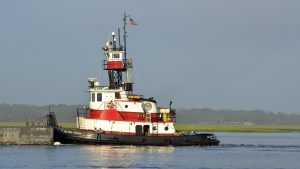
Summing Up: The Art of Tugboat Conversion
In conclusion, the process of tugboat conversion is truly an art form, and Amaya Dockyard & Marine Services Inc. in the Philippines has perfected this craft. Their expertise and innovation have allowed them to transform old, outdated vessels into functional and efficient tugboats that can handle any marine task. With their state-of-the-art facilities and highly skilled team of engineers and craftsmen, they have managed to breathe new life into these aging ships.
The success of Amaya Dockyard & Marine Services Inc. lies in their meticulous attention to detail throughout the entire conversion process. From assessing the structural integrity of the vessel to ensuring it meets safety standards, every step is carefully planned and executed with precision. They also take environmental factors into consideration, making sure that these converted tugboats are equipped with eco-friendly technology.
Furthermore, what sets Amaya Dockyard apart from others is our commitment to sustainability. By repurposing old vessels instead of building new ones from scratch, they are reducing carbon emissions and minimizing waste production. This not only benefits the environment but also provides a more cost-effective solution for clients looking to upgrade their fleets.
Overall, choosing Amaya Dockyard & Marine Services Inc. for your tugboat conversion needs in the Philippines is a wise decision – one that ensures quality craftsmanship, environmental responsibility, and reliable performance on the open seas.
Voyage into the world of tugboat conversion and see how dockyard and marine services companies breathe new life into these mighty vessels. Begin your exploration today!

